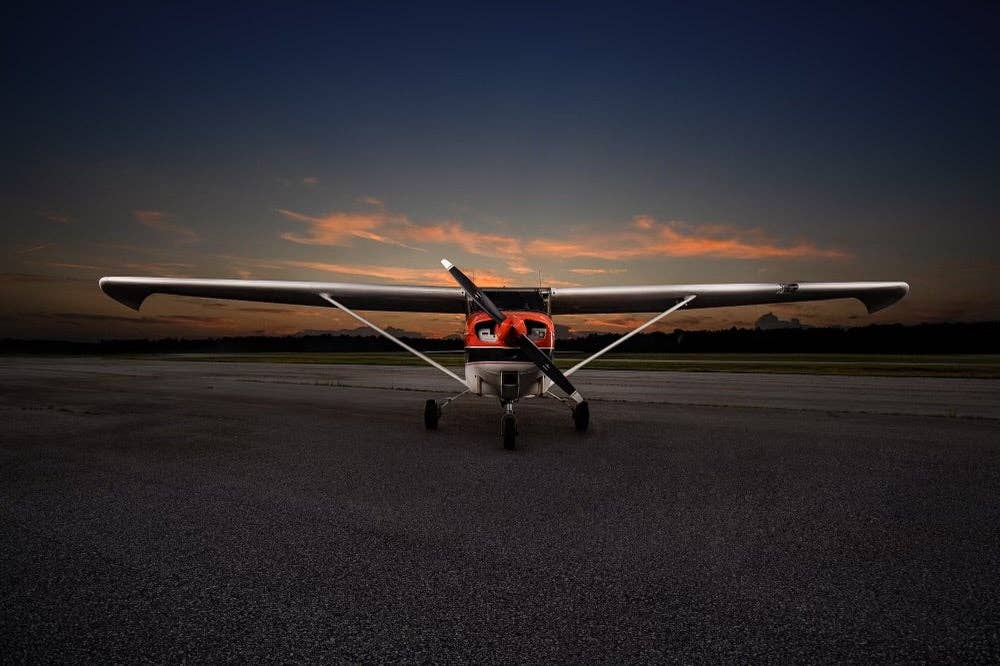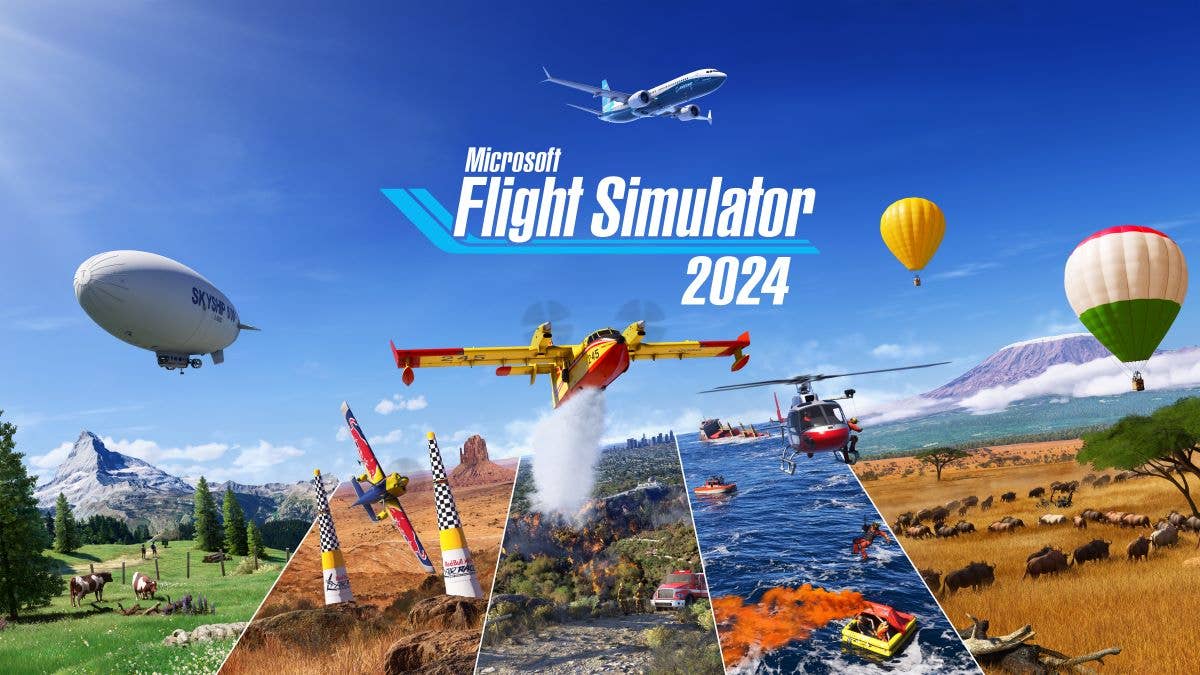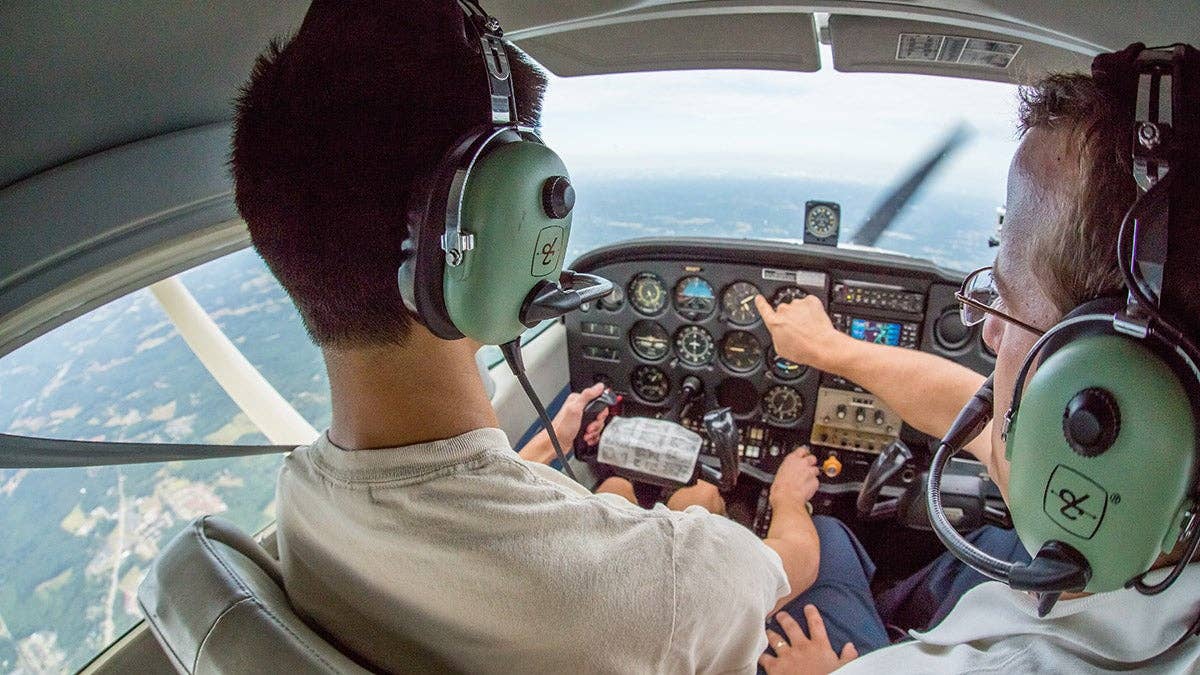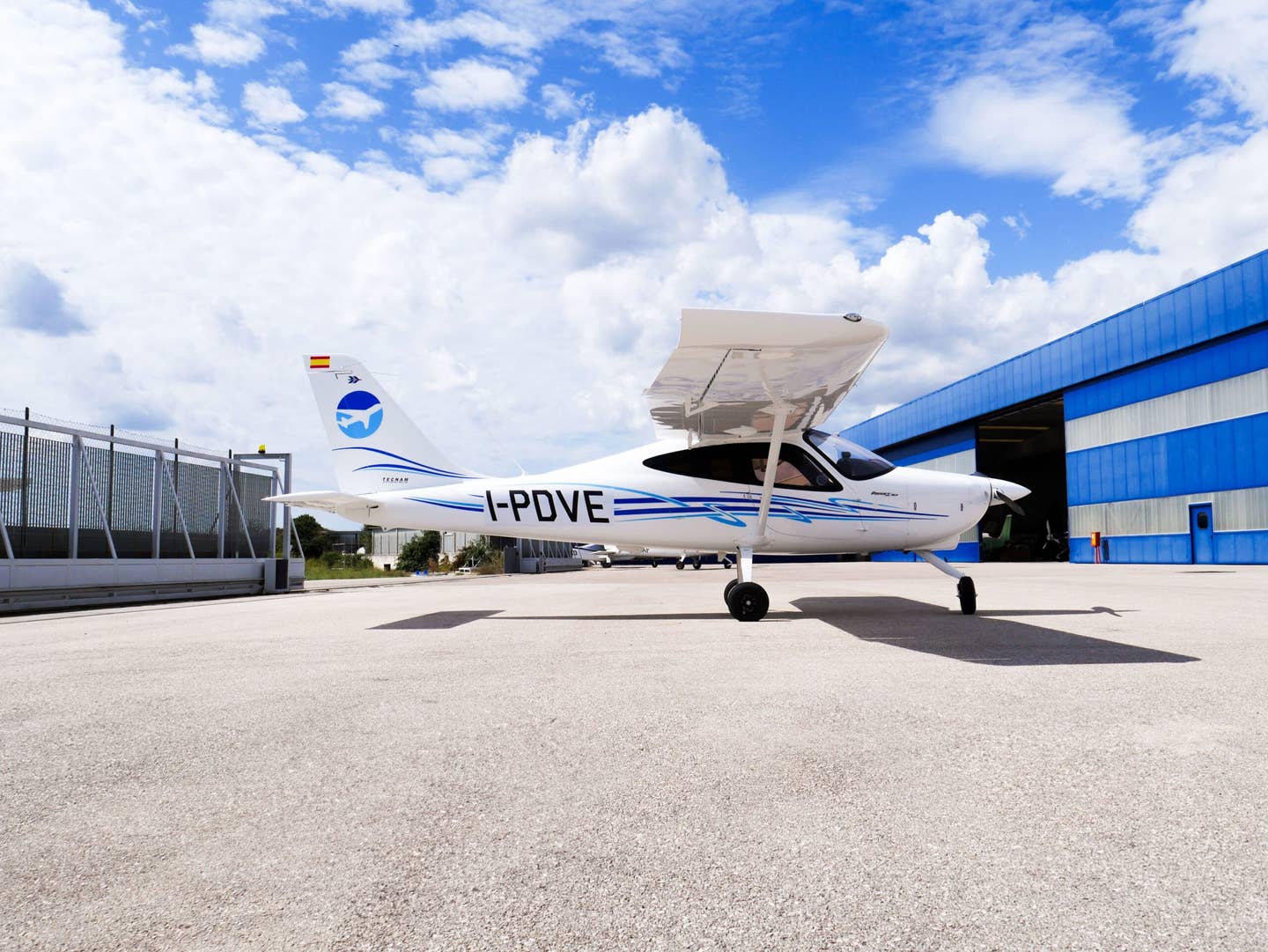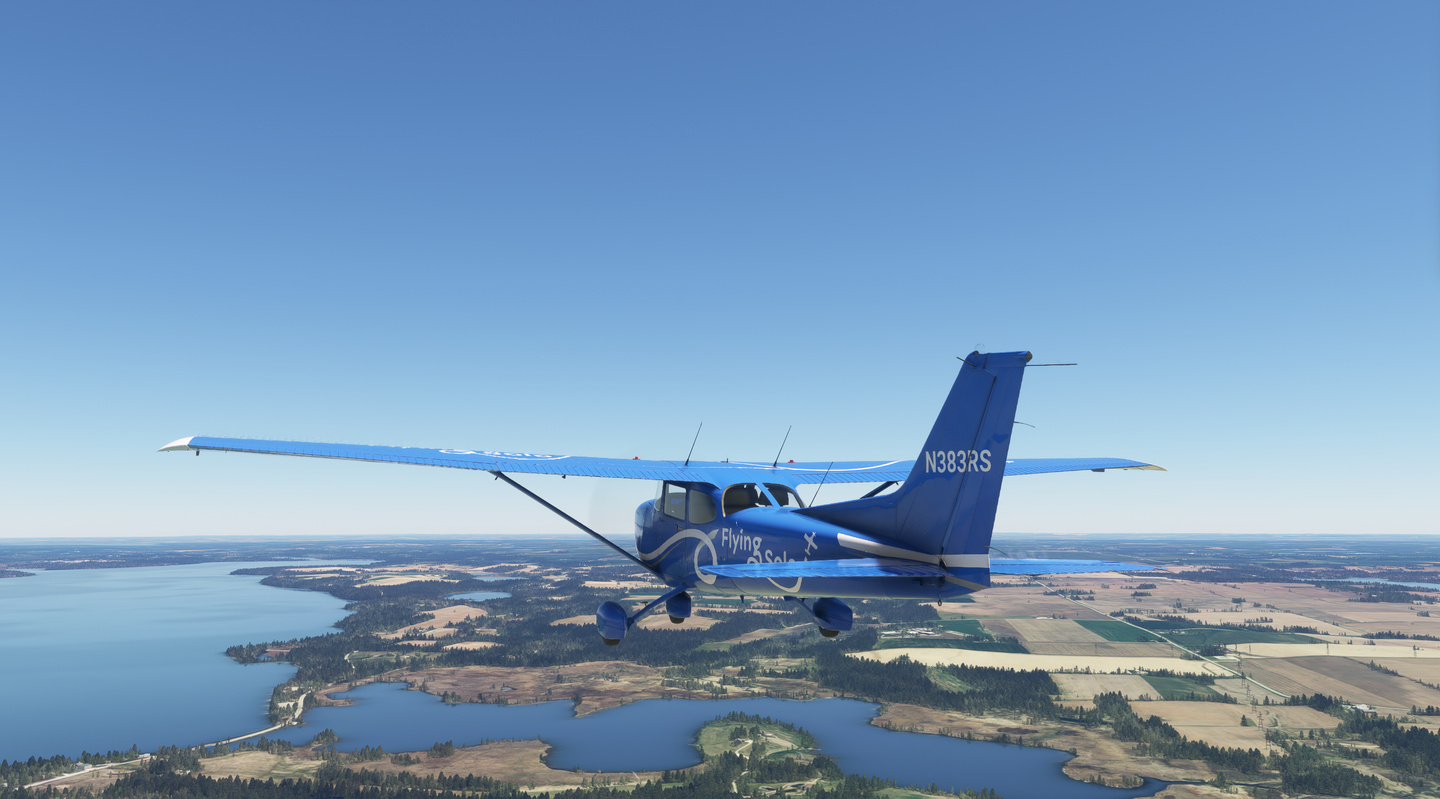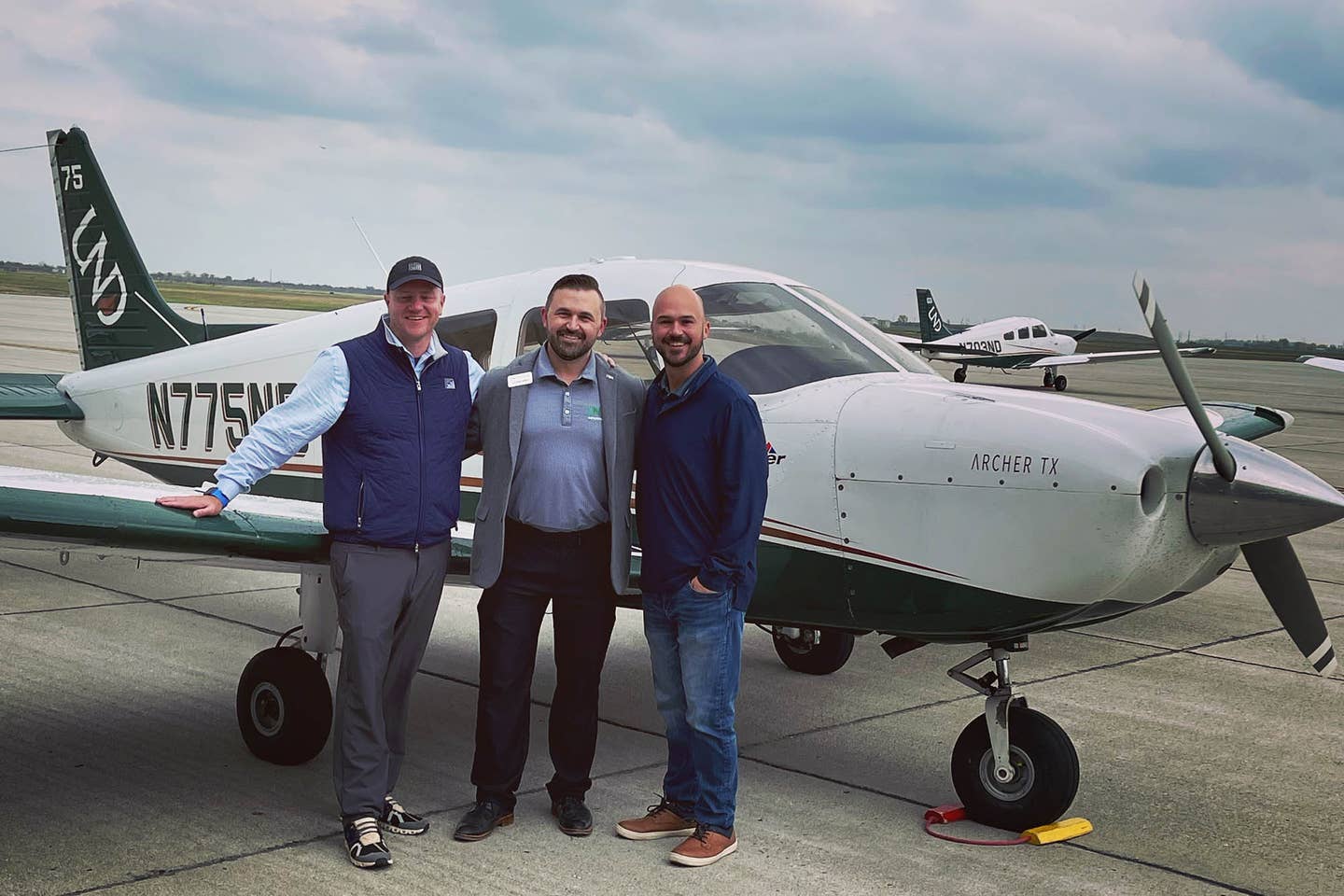
FLYING’s Craig Fuller (left) and Preston Holland (right) visit with UND School of Aerospace Senior Director of Development Jonathan Gehrke. Craig Fuller
Editor’s Note: “Taking Off in Public” is a new digital series written by Craig Fuller, the new owner of FLYING. In this series, Fuller will provide insight into his plans for Flying and a first-hand look at how Flying is being built for the next generation.
Choosing a college is one of the most important decisions any high school student can make. College shapes so much of one’s future life that a decision this profound should be made very carefully.
In aviation circles, colleges have a significant influence on the future of our industry. With the military playing less of a role for developing pilots and aerospace professionals, institutions of higher learning have become ground zero for training future aviators.
With pilots and aviation professionals being in such high demand, FLYING has taken a deeper look at aerospace education. We hired a full-time reporter to cover aviation education and believe covering news and commentary regarding aviation colleges and universities from a pilot’s perspective provides an important resource for prospective aviation students and their parents.
After all, there are many college guides, but none that have the perspective of an aviator.
This past week, I had the opportunity to visit the University of North Dakota, which is home to the largest aviation program of any public university in the world.
The Nuts and Bolts
UND Aerospace has more than 1,800 students and nearly 500 faculty and staff. It’s home to four departments:
- Atmospheric Sciences
- Aviation
- Earth System Science and Policy
- Space Studies
Degree programs include:
- Air traffic management
- Airport management
- Atmospheric sciences
- Aviation management
- Aviation
- Commercial aviation
- Earth system science and policy
- Space studies
- Unmanned aircraft systems operations
The university’s pride and joy is the pilot training program, or bachelor of science in commercial aviation.
The program has a fleet of 130 airplanes that are currently sourced almost exclusively through Piper. The school runs the fleet as efficiently as any commercial operator, with a large on-site maintenance and supply chain program. Having a single provider of airplanes enables interchangeability and eases risks of downtime.
The pilot training program is operated out of Grand Forks International Airport (KGFK), the closest major airport to the Canadian border, located just 80 miles south of Manitoba.
The Modest Giant
But even though Grand Forks isn’t a major international hub for the airlines, it’s still one of the busiest airports in the U.S. In fact, for a few days so far in 2021, Grand Forks International has had the largest number of flight operations of any airport in the U.S., with more than 2,000 takeoffs and landings on a given day. The UND blog took it one step further when back in March it proclaimed that Grand Forks may have been the busiest airport in the world.
Save The Date
On October 27, FLYING will be hosting its first virtual event, “What’s next in general aviation?” We will have some of the most influential companies and executives represented, discussing what’s next for the general aviation industry. To learn more about the speakers and lineup, click here. The event is free, but you must register.
“And given that the U.S. is home to the world’s busiest airports, we might have been No. 1 in the world,’ UND’s chief flight instructor says.”
The UND flight program can take credit for helping to create this distinction. The flight operations--or number of takeoffs and landings--may not carry the cachet of carrying a large number of passengers or air cargo like Atlanta Hartsfield or O’Hare, but for pilots or air traffic controllers, they all represent an aircraft to monitor and sequence.
Even more challenging is that most of the pilots operating out of Grand Forks are not seasoned professionals, but rather students with various levels of experience.
I can only imagine how challenging it is to be a controller at Grand Forks.
The most surprising thing I learned during my visit is that the school will still conduct operations unless the temperature drops below -30 degrees Fahrenheit. I rarely want to get in a car with heated seats when the weather is below freezing, I can’t imagine getting in an airplane when it’s that cold.
While it means that students will be getting a lot of winter flying experience, I can’t imagine that many of them are excited to be flying around in such harsh temperatures—but I’m biased, having lived my whole life in the South.
The school has a robust lab of flight simulators to provide real-world experiences that are safest simulated on a screen and not in the air.
The school has a virtual tower with a 360-degree view, which acts as an ATC simulator. The lab can simulate weather, wildlife, and countless challenging situations to prepare ATC students with some of the most difficult scenarios. Student pilots are even invited to participate in the ATC simulations, in an attempt to give the ATC students a more authentic experience.
An Eye Toward The Future
UND has also developed real-world labs that simulate what life is like to live on the moon or Mars. When we were on campus, students were simulating a two-week stellar habitat experience.
The school is thinking a lot about what’s to come. There’s been a significant ramp up in unmanned aerial systems programs and research, along with developing business-model and supply-chain education. The school understands that an 18-year-old student will likely experience the urban air mobility revolution within their career.
If Morgan Stanley’s projections are correct, the urban air mobility (UAM) industry will be a $9 trillion dollar industry by 2050. If that happens, UAM will be larger than the entire transportation industry is today.
Keep in mind that 2050 is less than 30 years away. A freshman in college would be experiencing the societal changes equivalent to the span of time from the internet revolution in the early 90s to 2021.
In addition to urban mobility, the university is thinking deeply about space commercialization. UND has a partnership with NASA and a number of major private space contractors. They believe that the future of aerospace is multifaceted and about to receive an explosion of investment and interest in the private and public sectors.
Room for Improvement
While I was very impressed with the program at UND, I did find some of the aerospace facilities dated. You could tell that the school is making investments in the campus, but still has a ways to go.
The aerospace buildings around the airport almost gave the air of a prison, but only because of the 1970s era architecture. Luckily for future students, the foundation is working to secure $60 million in capital funding to construct a flagship building for the program at the airport. I saw the plans, and once it’s built, the facility will be the finest home to any aviation education program in the world.
Dropping The Puck
After we completed our tour of UND’s Aerospace program, we were invited to watch the UND hockey team take on Niagara. While the game was a bit of a blowout (a 6-2 victory against the Purple Eagles), I was most impressed by the hockey facility and environment. It reminded me of attending a college football game at Alabama.
I found the environment exciting and energetic. The hockey stadium was as impressive as any indoor sports facility I had ever been in, far besting the Nashville Predators home at Bridgestone Arena. You could tell there was a substantial amount of pride in the team, which was helped by the fact that UND has won eight NCAA national hockey championships.
While my 15-year-old has a few years before he settles on a school, I’ll encourage him to look at UND. And although he’d be far from home, he certainly wouldn’t be unique. Almost 90 percent of the students in the aerospace program are from out of state, some from several states away.
Interested in connecting with me? Follow me on Twitter @freightalley.

Subscribe to Our Newsletter
Get the latest FLYING stories delivered directly to your inbox

